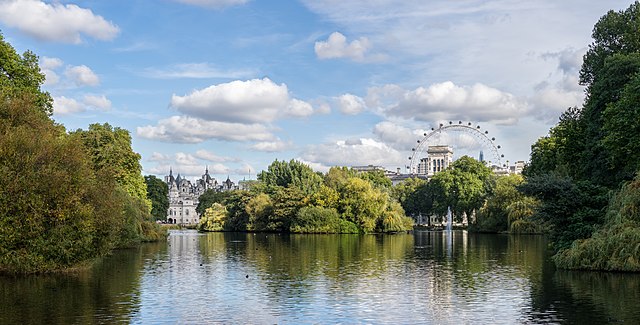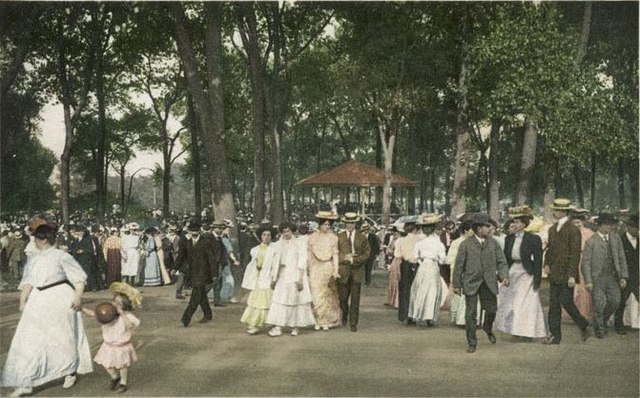St James's Park is a 23-hectare (57-acre) urban park in the City of Westminster, central London. A Royal Park, it is at the southernmost end of the St James's area, which was named after a once isolated medieval hospital dedicated to St James the Less, now the site of St James's Palace. The area was initially enclosed for a deer park near the Palace of Whitehall for King Henry VIII in the 1530's. It is the most easterly of a near-continuous chain of public parks that includes Green Park, Hyde Park, and Kensington Gardens.
Looking east from the Blue Bridge towards Horse Guards
Duck Island Cottage has a long history and is now the headquarters for the London Parks & Gardens Trust
Temporary government buildings on St James's Park, First World War, by Henry Rushbury
André Mollet's design for the park in Charles II's time, before 18th and 19th century remodelling, which shaped a more natural-looking lake from the straight canal visible here, the eastern part of which was filled in to create Horse Guards Parade
An urban park or metropolitan park, also known as a city park, municipal park, public park, public open space, or municipal gardens (UK), is a park or botanical garden in cities, densely populated suburbia and other incorporated places that offers green space and places for recreation to residents and visitors. Urban parks are generally landscaped by design, instead of lands left in their natural state. The design, operation and maintenance is usually done by government agencies, typically on the local level, but may occasionally be contracted out to a park conservancy, "friends of" group, or private sector company.
Central Park, one of the world's most visited tourist attractions, is surrounded by the skyscrapers of Manhattan in New York City.
Macon, Georgia Central City Park, Main Avenue, c. 1877
A concert in Chicago's Lincoln Park, c. 1907
Millennium Park is an urban park in Chicago that is partitioned into areas with various special uses








